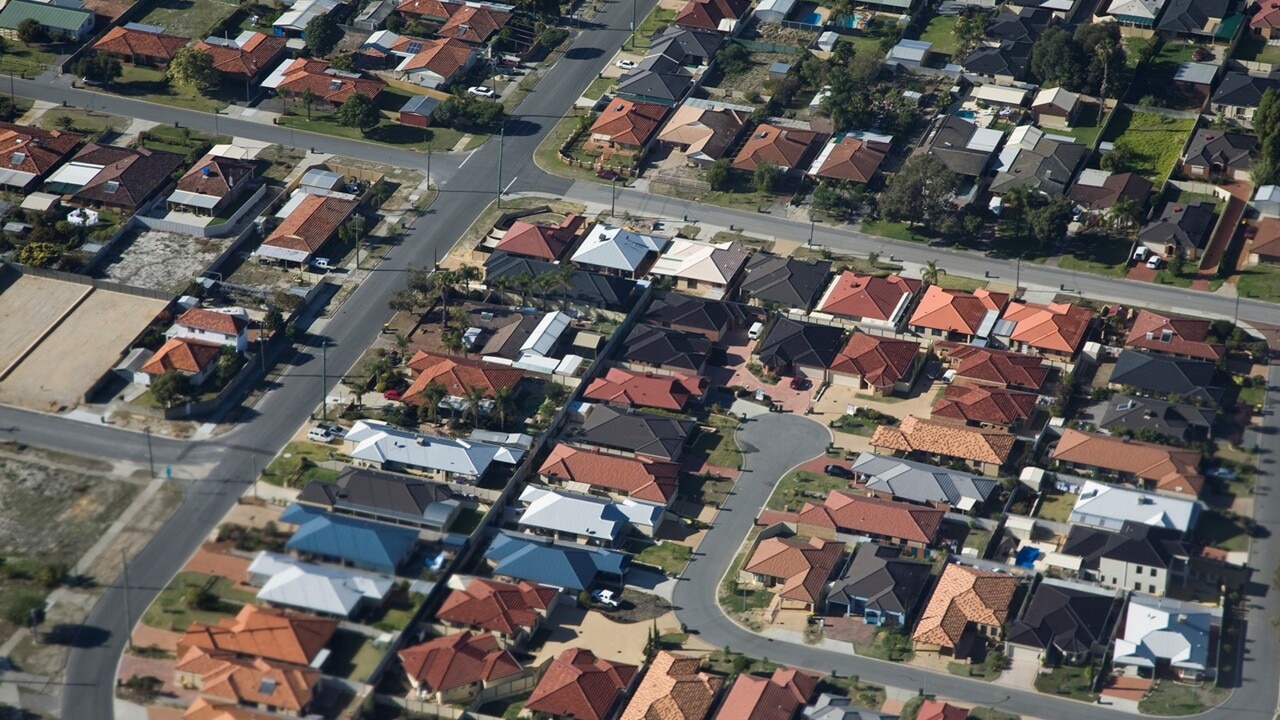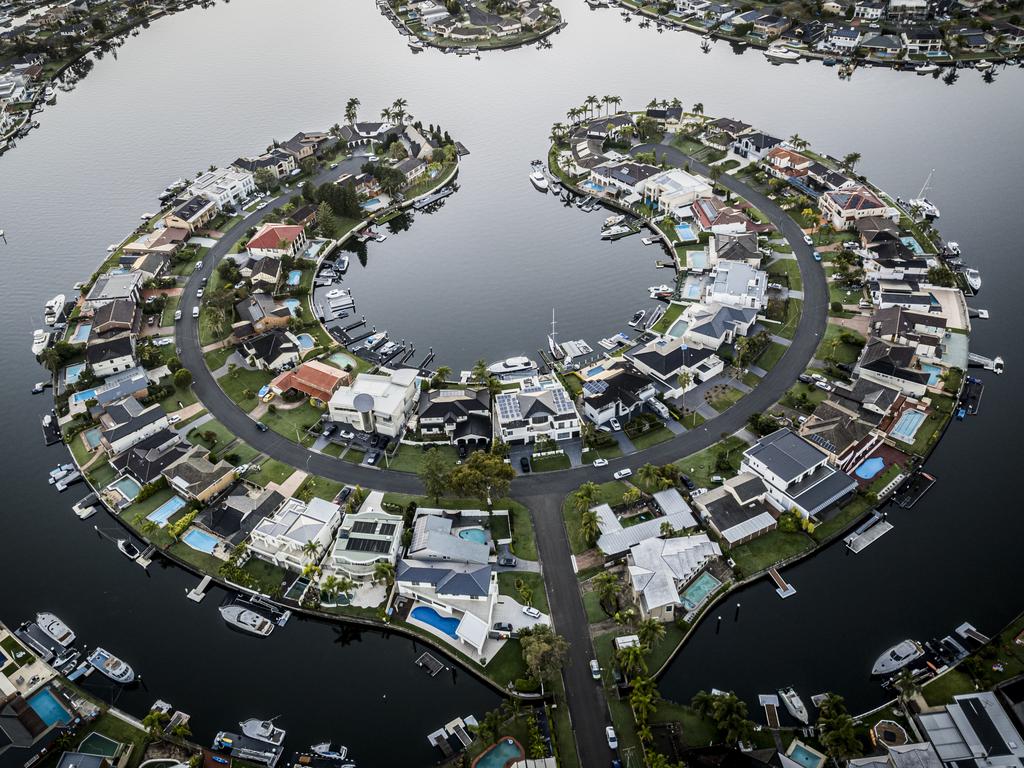Australian housing market passes $10 trillion
The total value of Australia’s residential housing market has reached a new record, official figures confirm.

The total value of Australia’s residential housing market has passed $10 trillion for the first time, official figures confirm.
The latest figures from the Australian Bureau of Statistics show the value of the country’s 10.8 million residential dwellings rose by $221.2 billion in the three months to March 2022, bringing the total to $10.2 trillion.
The $10 trillion milestone, officially confirmed by the ABS in its quarterly release on Tuesday, was noted by finance experts last week who warned the ratio of Australia’s residential land value to GDP had now exceeded Japan’s record of 330 per cent at the height of the 1989 bubble.
“The total value of residential dwellings rose $1.8 trillion in the 12 months to the March quarter 2022 from $8.4 trillion in the March quarter 2021,” ABS head of prices statistics Michelle Marquardt said in a statement.
Of the $10.2 trillion in value, $9.7 billion was owned by households.
NSW accounted for 40.1 per cent, or $4.1 trillion, of Australia’s total value of dwellings, followed by Victoria with 26.9 per cent ($2.7 trillion) and Queensland with 16.7 per cent ($1.7 trillion).
The mean price of residential dwellings in Australia rose $16,600 over the quarter to $941,900, while the number of dwellings rose by 45,000.
“Over the past year, growth in median prices in regional NSW and Victoria has outpaced growth in their capital cities for both houses and attached dwellings,” Ms Marquardt said.
The median house price in Sydney rose 16.4 per cent to $1,245,000 over the 12 months to the March quarter, but in regional NSW prices were up 29.1 per cent to $800,300.
Melbourne rose 9.4 per cent to $930,000, compared with a 17.4 per cent rise in regional Victoria to $640,000.
Nationally, the strongest annual rises in median house prices were in regional Tasmania, where prices rose 30 per cent to $520,000, and in Brisbane where they were up 29.3 per cent to $787,500.

Ready to buy your next home? Read Compare Money's guide to buying a home at auction. >
Across the other capitals, Adelaide rose 23.8 per cent to $650,00, Hobart 23.4 per cent to $753,000, Darwin 12.1 per cent to $600,000 and Canberra 28.3 per cent to $1,065,000.
Perth posted the weakest growth of any capital city or region, up just 1.9 per cent to $550,000, while regional Western Australia rose 4.9 per cent to $425,000.
It comes as fears grow of a major property correction, with the Reserve Bank of Australia hiking interest rates by a shock 50 basis points this month to bring the official cash rate to 0.85 per cent, following a 25 basis point move in May.
Soaring inflation forced the central bank to act, bringing the cash rate up from its record low of 0.1 per cent and marking the first increase since 2010.
The futures market predicts the RBA will lift the cash rate to 3.5 per cent by May 2023, in a move some commentators warn could “crash” the housing market by more than 30 per cent.
Prices have already begun to fall, with CoreLogic’s national index recording a decline of 0.1 per cent in May – the first since September 2020.
“With underlying inflation moving sharply higher to be up 3.5 per cent over the year, the RBA’s heavy lifting on the cash rate still has some way to go, with interest rates likely to consistently rise through the second half of the year and into 2023,” CoreLogic research director Tim Lawless wrote last week.
“Together with the 25 basis point increase handed down last month, the cumulative 75 basis point lift in mortgage rates will add approximately $200 per month in additional repayments on a $500,000 mortgage compared with mortgage rates in April.”
Mr Lawless described the additional repayments and soaring inflation as a “double whammy for indebted households”.
“Higher costs for food, fuel and finance are likely to see household savings continue to taper as families funnel more of their income towards servicing their mortgage and funding essential costs of living,” he said.
“For housing markets, higher mortgage rates add further downside risk to values, which are already trending lower, such as the case in Sydney and Melbourne, or losing steam in the rate of growth across most other markets.”
He added home values were already easing well ahead of the cash rate increases.
“A combination of higher fixed mortgage rates, lower consumer sentiment, tighter credit conditions and worsening affordability have all played a role in the slowdown to-date,” he said.






